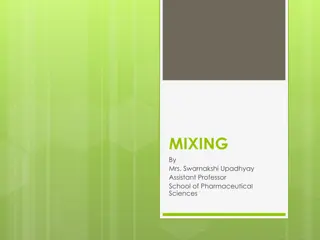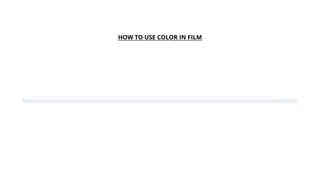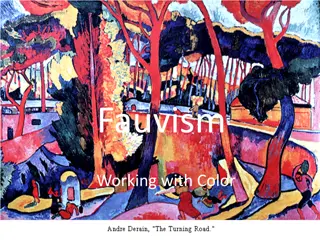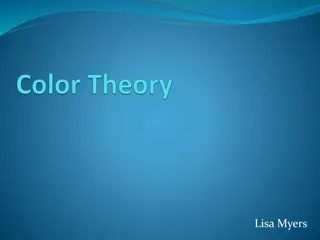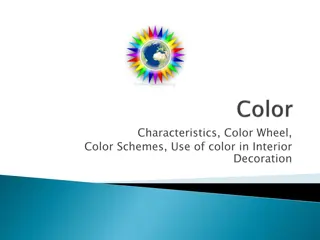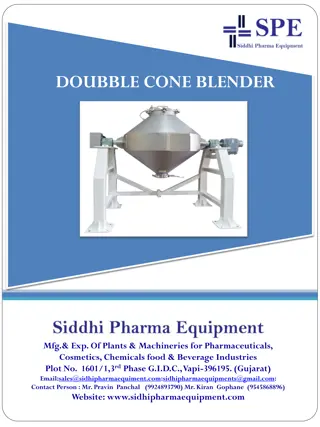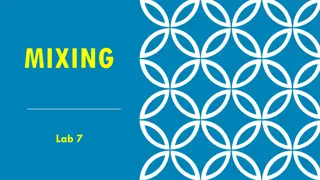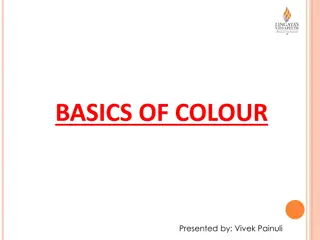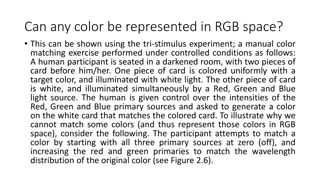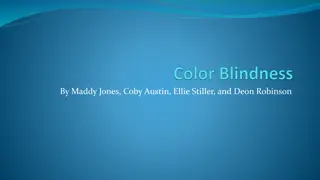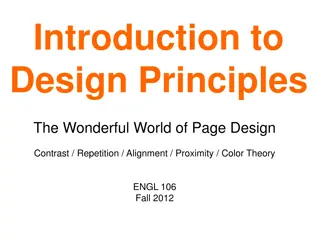Understanding the Science of Color Mixing
Discover the fascinating world of color mixing, from the composition of pure white light to the creation of different hues through additive and subtractive methods. Explore how our eyes perceive colors, the role of RGB systems in computers, and the traditional RYB model in art. Unveil the secrets behind tetrachromacy and the intricate processes of mixing light and paint to produce a myriad of colors around us.
Download Presentation

Please find below an Image/Link to download the presentation.
The content on the website is provided AS IS for your information and personal use only. It may not be sold, licensed, or shared on other websites without obtaining consent from the author. Download presentation by click this link. If you encounter any issues during the download, it is possible that the publisher has removed the file from their server.
E N D
Presentation Transcript
Light We know that pure white light from the sun is actually made from many colours.
Colour What we call colour refers to the wavelength of just a small section of the electromagnetic spectrum that happens to be visible to us.
Mixing light called additive mixing Mixing pure red light, green light and blue light back together in equal amounts recreates pure white light! In fact, mixing red, green and blue light together in different amounts can make any other colour. This is how our eyes work with colour. We have specialised cells on our retinas called cone cells, and the cone cells come in 3 types, each one sensitive to either red, green or blue light. Problems with any of these cone cells can produce colour blindness. Some people have an extra type of cone cell for yellow. This is called tetrachromacy and enables more colours to be seen.
Computers and light - additive mixing Computers use the RGB system for display on screen. This works in a similar way as our eyes. 8 bit binary numbers are used to represent how much of each colour (red, green and blue) need to be mixed together to make a particular colour. 8 bit binary numbers have 256 combinations. So we can make colours from 256 possible amounts of red, 256 possible amounts of green and 256 possible amounts of blue. That s 256 x 256 x 256 different colours!
How we see colour - subtractive mixing The colours we normally see day to day come from reflected light. A pink dress looks pink because pink is the colour that the material of the dress is NOT absorbing! The pink colour is reflected away from the dress into our eyes. Similarly, plants are green because they DON T use green light. Plant leaves soak up red and blue light from the sun and the left over green light is scattered away. This way of seeing colours is called subtractive mixing, because we are seeing the light that s left after absorption.
Mixing paint subtractive mixing When we mix paints together. The mixing follows the rules that we are more familiar with in art lessons. Art students are taught the RYB system of primary colours which predates scientific knowledge of colour mixing. It was worked out over hundreds of years of arts trying to create colour pigments. More recently, science has taught us that the RYB model is not accurate. The subtractive model, shown on the right is. Subtractive RYB
Modern printing - subtractive mixing Modern printing uses the subtractive system using the 3 primaries of Cyan, Magenta and Yellow. Although black can be made by mixing all 3 colours, a separate black is included as a 4th colour because it is used so often.




